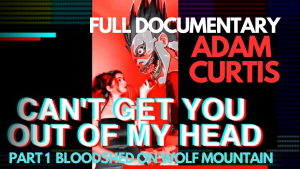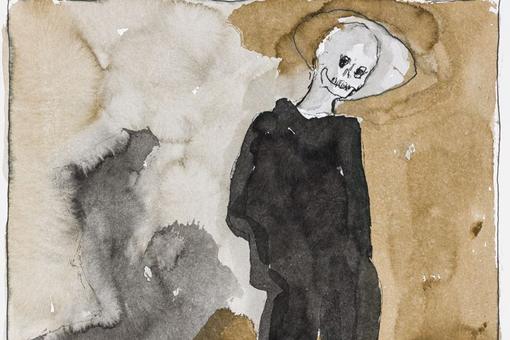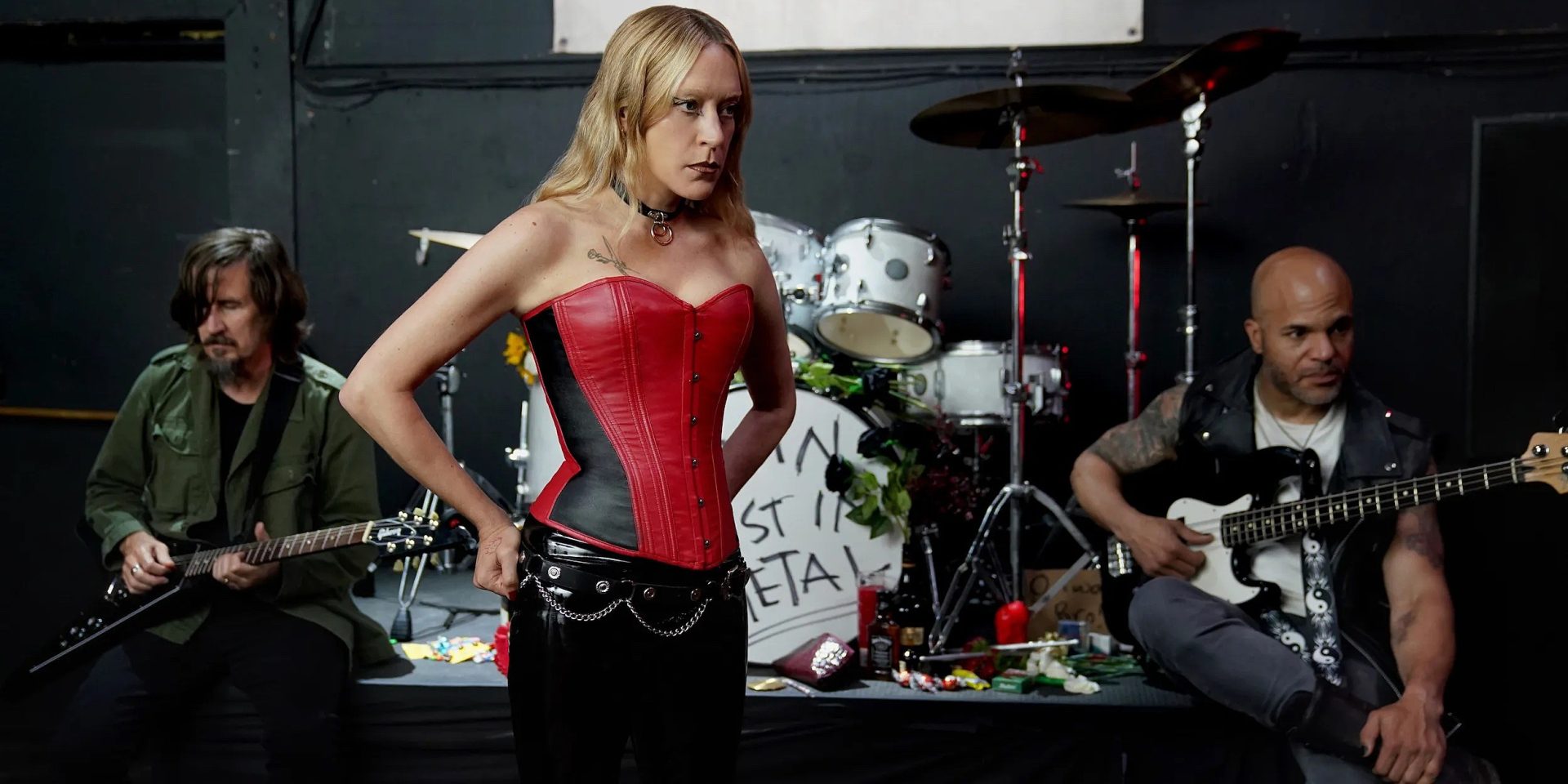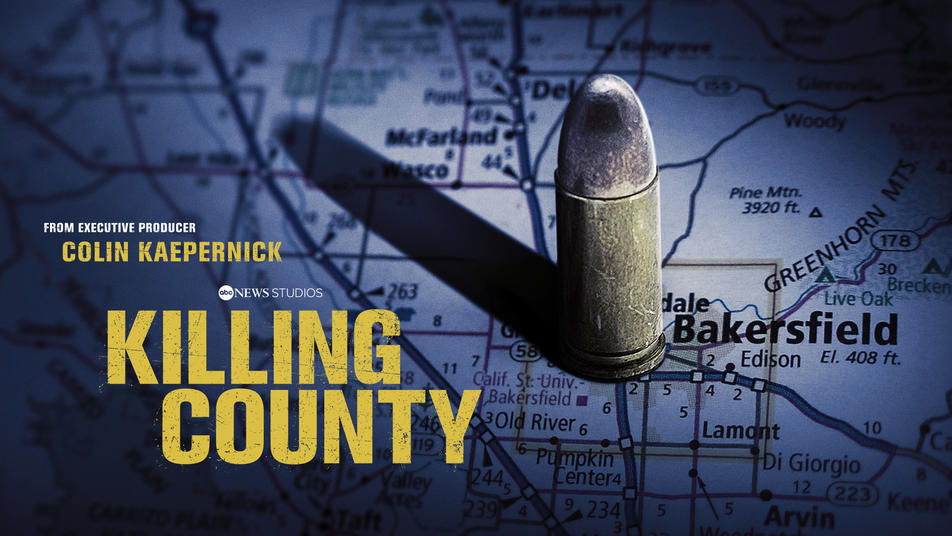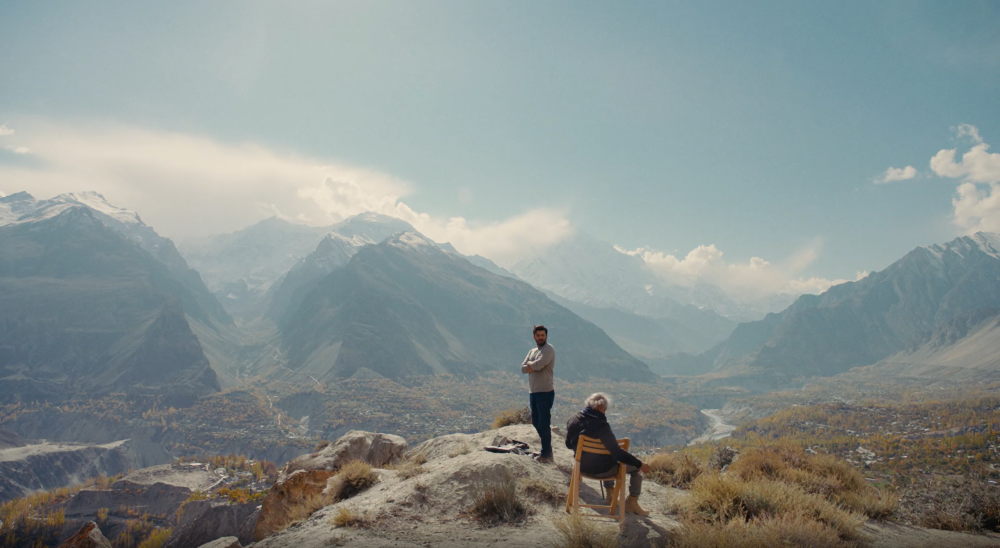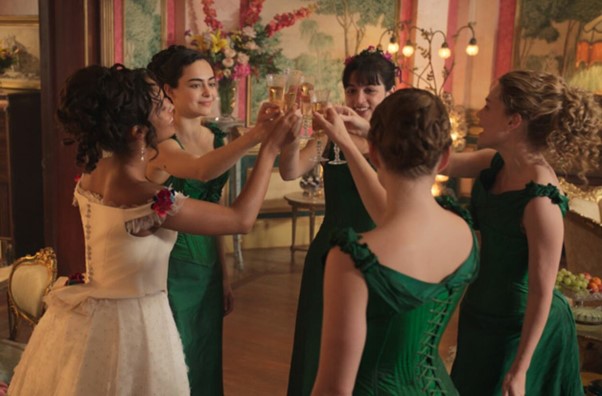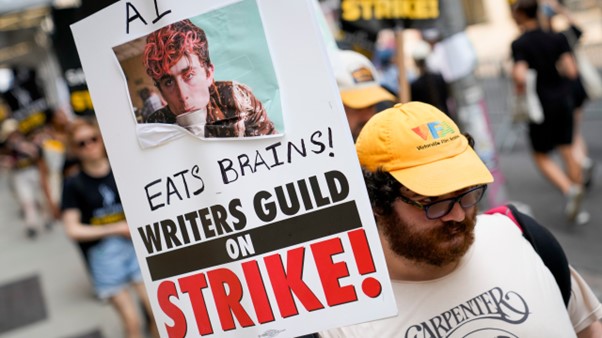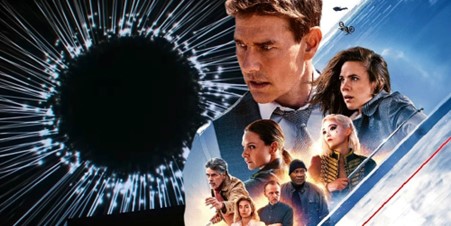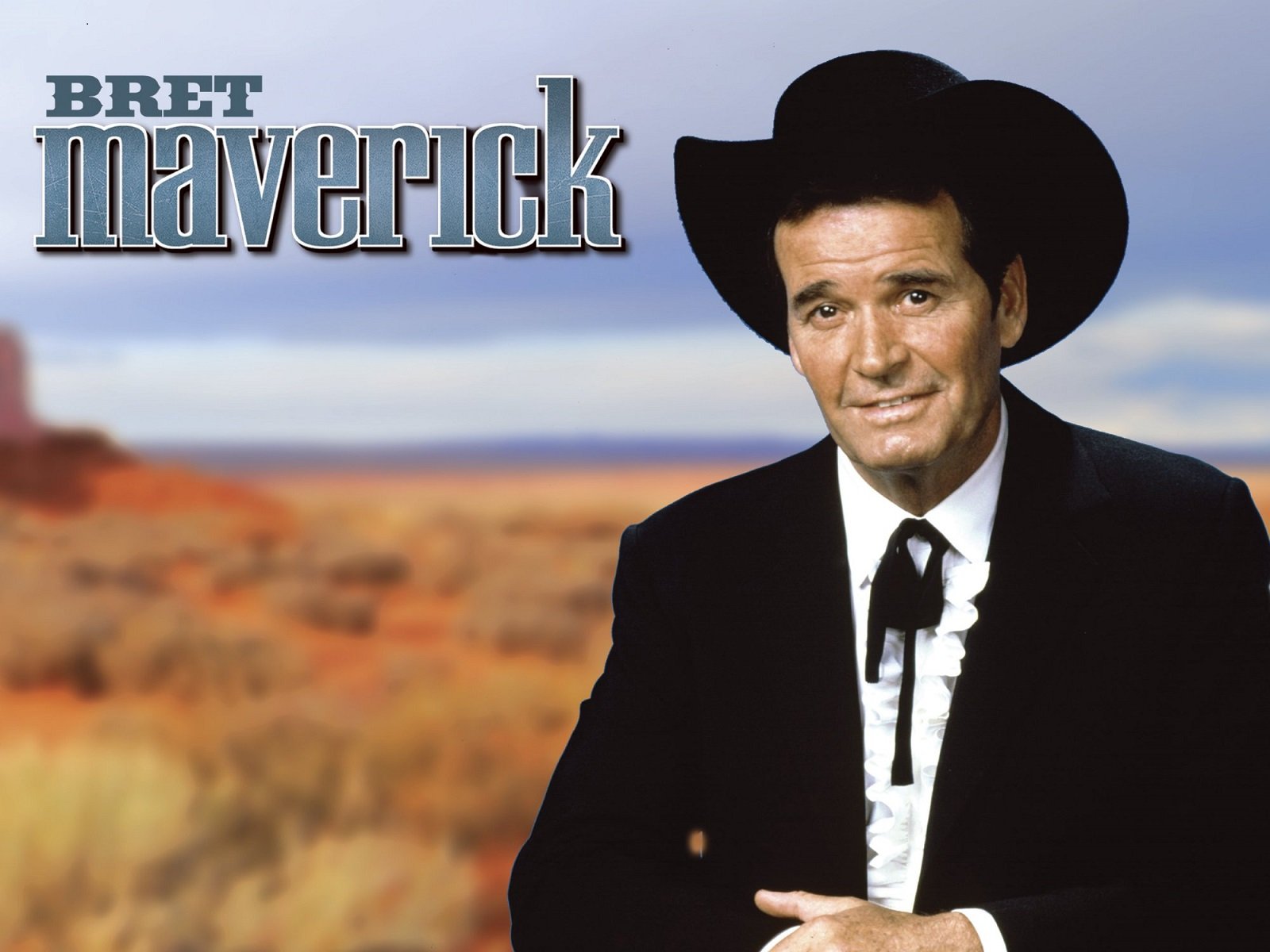Dennis Broe reports on the ups and downs of the U.S. streaming industry in 2023. Image above: SAG-AFTRA members join WGA members on the picket lines outside of Hollywood studios, courtesy of Jason Nelson/Decrypt.
The year in the TV business can be broken into three parts. The year began, following last year’s market doubting of the profitability of streaming, with retrenchment as the studios cut back on both product and labour, in an attempt to show solvency and address back debt.
On both fronts these cutbacks amounted to an attack on labour and in the second and major part of the year, labour struck back with the writers and actors, having had enough of belt tightening and penny pinching, joining many other unions in either threatening to strike or striking in what in the U.S. as a whole and Los Angeles in particular, was a summer of labour discontent that continued into the fall.
Through their actions, the workers changed how the story was written, moving it from being a tale of woe about the fate of the studios to one where the studios were culpable for their bloated salaries and failure to reward those actually creating the profit, and one where workers were entitled to part of a still enormously bountiful industry.
The third part of the year, the current phase, sees the writers, actors and directors, winning major concessions not only in salary and benefits but also on controls and limits on the use of artificial intelligence, an area unions in many sectors are concerned about. Also they have at least proposed that profits and bonuses be tied to streaming results, with the producers for the first time required to at least give a glimmer of the mass of audience data and actual viewer data they so jealously guard.
However, as they return to work, the retrenchment continues in this now more open class struggle, as the major studios attempt to limit the gains by continuing cutbacks and in some cases potentially folding or selling off assets.
Recently for the first time a reporter on mainstream media used the term “forever wars” in querying an administration official about the genocide in Gaza, a sign that the U.S. imperial notion of one “just” war after another is breaking down. What is becoming apparent in this snapshot of a portion of the entertainment industry, is that one of the most enduring of the forever wars is the one waged by U.S. capital against its workers – and that forever war is now being questioned on the domestic front as well.
A fool’s errand
The year in the television studio and streaming industry began with the fallout from the previous year’s Wall Street attack continuing. In March of 2022 the subscriptions of Netflix, the leader in the field, fell and investors then stopped bankrolling the industry based on the tech bubble model of perpetual growth, in the streaming case measured in subscriptions, as the indicator of profitability.
Instead, stock prices fell as investors demanded immediate results, looking askance at both the lack of profits and the amount of debt on the books for the major streamers, with Disney, for example, Netflix’ strongest competitor, losing $1.1 billion in the first quarter and Warner Brothers Discovery (WBD) now $44.80 billion in debt.
The response of the major companies was to cut back on jobs and production, with Disney vowing to get rid of 7,000 jobs and Disney, Netflix and what was then HBO Max all not only cutting back on programming but also cancelling movies and series that were already shot in order to save money on post-production and marketing as well as paying creators residuals while claiming massive tax write-offs. The “strategy” was essentially making money by not making product, the opposite from the “content arms race” that had seen the growth of “peak TV,” where in 2022 599 series were produced.
The most egregious offender in this category was WBD’s David Zaslav, who had been tagged to lead the company because of his array of cheap reality TV series on the Discovery Channel, and who brought along with him the Discovery Chief Financial Officer known for his cost-cutting to supervise the bloodletting as the order of the day became “Turn the cameras off.”
This went on throughout the industry, as so far this year 119 shows had been cancelled or not renewed, among them some of the most expensive (Disney’s Willow, Netflix’s 1899) and some of the best and most socially responsible series (ABC’s Alaska Daily, Netflix’s The Chair, Hulu’s Reboot, HBO’s Black Lady Sketch Show).

The end of Batgirl?
Taking the cake though was WBD’s refusal to release Batgirl, a superhero film with a major role for an African American actress, and the fourth and final season of Academy Award Winner Bong Joon-ho’s class-conscious environmental apocalypse series Snowpiercer after both had already been shot. (The series is still looking for a broadcast or streaming home.)

The most hated man in Hollywood?
In the midst of this slaughter, Zaslav was called “the most hated man in Hollywood,” and the creative workers in the industry did not fail to note that he rewarded himself for this penny pinching by taking a hefty salary raise, and that the almost half billion dollars he earned over five years with the company made him “one of the highest paid executives in America, earning far more than the heads of much larger companies.” During the resulting strike it was noted by struggling writers on the picket lines that his 2021 salary was “about the same level as 10,000 writers.”
The cost-cutting is partly the result of the Wall Street pressure along with the continual decline of cable subscribers, as “cord cutters” became a popular phrase this year, which in turn has led to declining revenue from both cable and network advertisers, who also noted the decline in network audiences due as well to streaming and to the competition from social media and gaming.
But this debacle is also partly the result of bad and/or greedy management, something the writers and actors and the general public is aware of, but is seldom touched on in the financial press. “Cord cutting” after all is in reaction to the high price of cable as producers and cable owners collaborate to continually raise prices on increasingly cash-strapped consumers plagued by inflation itself partly brought on by corporate price gouging.
Equally, the strategy of cost-cutting to show profit instead of ramping up production to attract new audiences is a penny wise/pound foolish short-term strategy that in the long run will cost the companies, as they tailor their planning not to audiences but to their Wall Street stock price. Zaslav has also proved to be tone deaf to the new and more diverse Hollywood, importing from Discovery a mostly male management team and bankrolling as a pet project a film for $45 million called Alto Knights, whose three principal creators are white men in their 80s and 90s.
Once more onto the picket lines!
The labour discontent that led to the writers’ and actors’ strikes was part of the larger movement of a besieged American working class that had employed walkouts, strikes, and threats to strike not only in the entertainment industry but also in the service industry and in the heart of what was once industrial America.
Recently unionized workers in some Starbucks cafes walked off the job to protest understaffing a holiday giveaway. Federal Express workers won huge gains by threatening to strike. Most presciently, the United Autoworkers Union launched a plant-by-plant series of strikes against the top three automakers that goes some way – many workers thought it did not go far enough – to making up for losses to earnings over many years due to inflation and cost of living increases.
In the strikes in Los Angeles, the writers, who in some ways helped build the city, claimed they could not make enough money because of rising housing costs to live in it. Their plight was acknowledged by an unnamed studio executive, who claimed the strategy of the producers in not negotiating was “to allow things to drag on until union members start losing their apartments and losing their houses.”
Workers were also strapped by the Biden Administration’s raising of interest rates, in what it claimed was the only way to fight inflation – as opposed to price freezes – thus making it harder and more costly for workers to make housing payments or borrow on credit. And this from the self-proclaimed “strongest labor president you’ve ever had.”
Neither strike was about making more money for the privileged. Both were in solidarity with average workers in the field, with the writers campaigning to stop the cuts in the number of writers in a series writing room, and the actors winning concessions for background actors.
Both strikes also called out the huge salaries and extravagant lifestyle of the studio and streaming head,s with Representative Alexandria Ocasio-Cortez asking in an actors’ rally in New York, “How many private jets does David Zaslav need?” while the leaders of SAG-AFTRA described execs as “land barons of medieval times.”
The studios could hardly plead poverty with, for example, Disney’s net income for the majority of the strike period jumping 63% and its revenue rising 5% to $2l.24 billion.
It became clear, as offer after offer was not met with a counteroffer, and as the heads of the studios and streamers did not even attend the negotiating sessions until months after both strikes started, that the strategy was to let the strikes go on as a new way of cost-cutting, while also blaming workers for a steady streaming diet of cheap product that consisted of game shows, reality TV and reruns.
Even the settlement had the air of cheapness as the producers first signed a contract with the writers, the provisions of which would set the table for the actors, but then waited more than a month to sign with the actors, because they were not needed for production until the writers had time to get scripts ready.

UAW vs. Gavin Newsom
In general, newspaper coverage and public opinion was favourable to the strikers, but one glaring but not obvious strikebreaking mantra was Governor Gavin Newsom’s oft-repeated soundbite that the strikes were costing the state first 5 and then 6 billion in lost revenue around production.
The answer to this pressure to settle for a lesser deal was provided by the UAW’s Sean Fain who, when confronted with a similar argument – that the strike would cost the car companies too much lost revenue and market position as non-unionized companies moved ahead – instead claimed that all would benefit from a hefty union contract, and that the moment a settlement was reached the UAW would be organizing workers in the non-unionized companies who would want to join when they saw the gains the company was able to secure.
In fact, Honda, Toyota and Hyundai all raised their workers’ salaries to approximate the UAW contract. The answer to Newsom’s accusation is that the union victories may result in across the board raises for workers in California – not net losses.
Already, in the entertainment industry, next spring will see not only the Teamsters but also below-the-line production personnel (gaffers, camera operators, make-up and set designers) each piggybacking off the writers’ and actors’ gains in negotiating new contracts. Meanwhile, urged on by their fellow workers on the picket lines, production workers at Walt Disney Animation and visual effects workers at Marvel voted to unionize and, during the strike, independent producers, who are under pressures similar to writers and actors, began a conversation about unionizing.
A hit, a hit, my kingdom for a hit!
There were important gains from both strikes, the writers’ being the second longest in WGA history and the actors’ being the longest in SAG-AFTRA’s 90-year history. The writers’ guild claimed it had won concessions amounting to $233 million annually which included a 12.5 percent increase in wages over the first year. Also gains in length of employment (putting restrictions on mini-rooms of writers in pre-development who were then let go); in being paid promptly; in healthcare for both members of a writing team, and in increased residuals for whenever a show is replayed as well as a share of foreign residuals.
It was clear that the writers’ and actors’ strikes went beyond the point where the studios could simply cost-cut, and actually threatened the business. The producers’ negotiating stance turned from, as one commentator observed, “macho, tough-guy stuff” to the point where, even The New York Times, which generally remained neutral regarding the strike, conceded that “the moguls capitulated on just about every front.”
The actors then won a 7 percent first-year raise, better healthcare funding, compensation on streaming shows and films, and a mandatory minimum number of background actors hired under union compensation. Their chief negotiator Duncan Crabtree-Ireland talked about the contract and the strike as “a very clear signal to other unions” because the actors proposed the terms of the negotiation instead of the producers’ association, the AMPTP, proposing and the actors modifying and then accepting the proposal.

Truth in Streaming
One of the most crucial questions of both strikes was compensation for creative personnel from streaming. Residuals and bonuses for television hits in the older era of Neilsen ratings and syndication were a matter of public information since both ratings and syndication contracts were announced.
Part of the advantage for the producers in the streaming era is that creative personnel have no access to the data and do not know how successful their shows are and how many viewers across the globe are watching them. Both unions won concessions with the producer’s bargaining unit, the AMPTP, now pledged to at least share the total number of hours streamed per program that will then be used to compute viewership bonuses for the WGA, said by the union to amount to a 76 percent jump in these payments. The actor’s union SAG-AFTRA went further, demanding 2 percent of streaming profits which the producers rejected though the union, following the WGA, also won a bonus based on streaming film and series’ performance.
Ted Sarandos, the head of Netflix, the most well-off of the streamers, which kept a steady flow of content going and also profited during the strike with its shares rising 37%, called the actors’ demand for a share in streaming profits “a bridge too far.”
Of course, it is the actors and writers who are creating the content that is allowing the former moguls to see themselves as tech barons, in the business now of digital distribution rather than content creation. In a parallel enterprise, the National Basketball Association, which could also be said to be part of the entertainment industry, profits between owners and players, who are the actual creators of the content, are shared 50-50. The NBA owners at least have stepped across “the bridge too far” and still have a very profitable enterprise.
The SAG-AFTRA president Fran Drescher, acknowledged the defeat but also the progress made: “…we’re getting the money. We opened a new revenue stream. What matters is that we got into another pocket.”
'Radical, savage and trans-humanist'
The gains recorded in putting limits on the use of Artificial Intelligence may be just as crucial going forward, as they open up the question of shared streaming profits. The Biden Administration’s proposed AI limits hardly discuss at all the use of AI to automate and thus cut jobs. Instead, the mostly voluntary rules focus on national security, AI distorted images, and data privacy.
The task of regulating this threat to employment has thus fallen to individual unions and is an omnipresent concern in recent negotiations. Even the hotel unions in Las Vegas in their new contract, for which they used the threat of a strike just before a crucial Formula 1 racing event to negotiate, put guardrails on attempts to use robots and AI to pour drinks, check-in guests and clean rooms.
The writers won concessions that prevent AI from reducing or eliminating writers and their pay, the most widespread fear being that AI-generated studio and streaming service scripts would then simply have a writer editing or “tending to” the work of the machine. They also won the right to refuse to have their work used to train AI services that could in the future be used to limit their employment. The studios, on the other hand, hung onto the right to use their past scripts to continue to train AI, indicating that they plan to employ the service in the future to try to circumvent writers.
The problem here is that, while the union won concessions with the studios, there are no such guardrails in place in AI tech companies, free also under the Biden guidelines to loot past creations to enhance the service. The actors won the important right to consent to or forbid the use of “synthetic fakes” or “AI objects” which can fabricate a kind of Frankenstein character based on bringing together well-known features from several actors, though they were criticized for not forbidding this use entirely.
The coming attack and maximum profitization of AI is forecast by the reinstallation of Sam Altman, a proponent of a no-holds-barred use beyond any ethical consideration, as head of one of the top companies Open AI. A French sociologist, head of AI research in Grenoble, described Altman, in terms that could now be used to describe the multibillion dollar industry as a whole, and which the Hollywood creatives will have to contend with, as having a vision that is “radical, savage and transhumanist.”
Exacting a dull revenge
The writers are now back to work, the actors are expected to ratify their contract this week and the Hollywood production wheels are grinding. The class war and tensions that were so openly exposed at the time of the strikes, however, have not gone away. The producers are promising more cutbacks in production, claiming the cost of making a show, because of the new contracts, is now 10 percent higher.
One established screenwriter predicts that “A lot of careers and even entire companies are going to go away over the next year.” And after any strike there is often punishment meted out by the company to those who are most vocal during the strike. In the area of cost-cutting for example, the writers won a guarantee of six staff members for a show with 13 or more episodes, so expect the new standard now likely to become 12 episodes, to save hiring another writer.
As far as the companies themselves, Netflix is still highly profitable, and Amazon and Apple can afford increased costs in their streaming division which are offset by profits in the main areas of these companies. But Disney+ for example has now announced it is merging its all-family content with Hulu’s more adult content and said to be in favour of possibly spinning off its network channel ABC while selling a share of its long-time cable staple ESPN.
Peacock, the Comcast streamer, lost 2.8 billion in 2023 and shares of Paramount, the CBS streamer, have dropped 50 percent since May. One way then to enact revenge for the success of the strikes is to simply plead poverty and drastically cut the amount of series.
As for the company CEOs, as The New York Times suggested, if WBD’s Zaslav gets in more trouble there is always the possibility of selling the company with – as everywhere else – Saudi money, always eager to find new investment opportunities.

An AI Frankenstein Monster
Disney chief Bob Iger is also fending off criticism from “activist” stockholder and investor Nelson Peltz who continues to buy stock in the company to get on the board, and who is demanding even more than the 7,000 announced job losses, many of them already implemented.

“Activist Investor” Nelson Peltz urging more firings
Only in the business press would someone who is screaming for sacking more employees after a year of firings be called an “activist.” It is this kind of phony activism that last summer and, now, back on the job, the writers and actors continue to counter, through their own genuine activism in favor of a more equitable industry and country.





